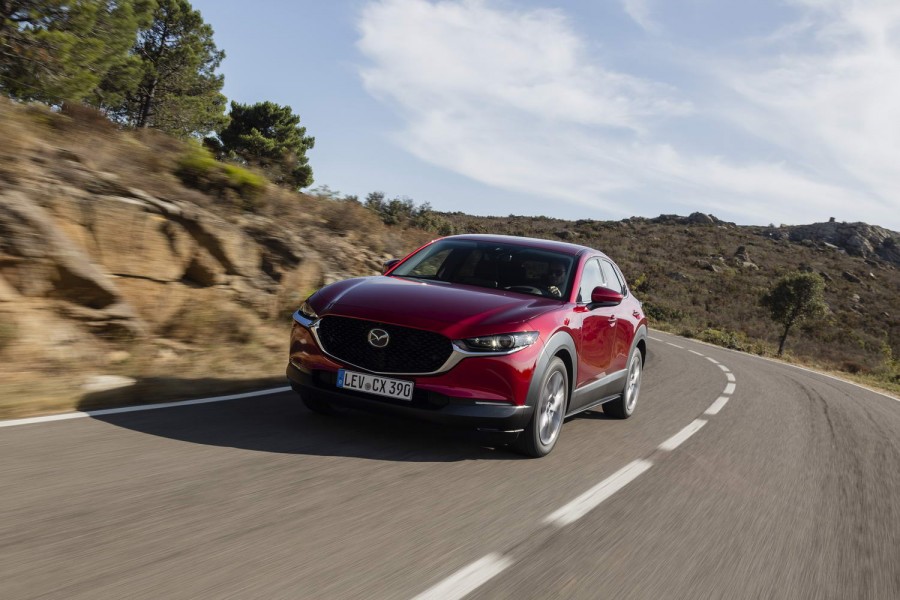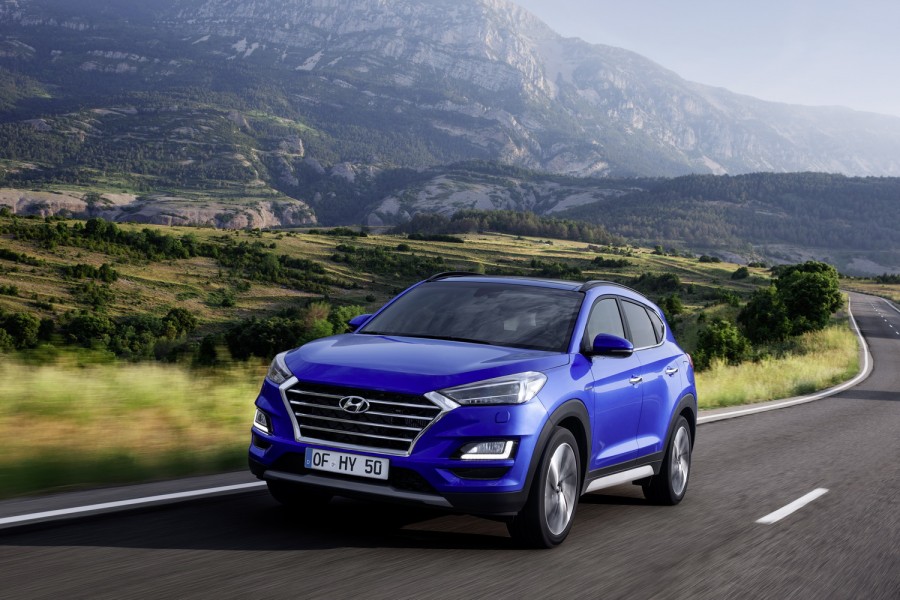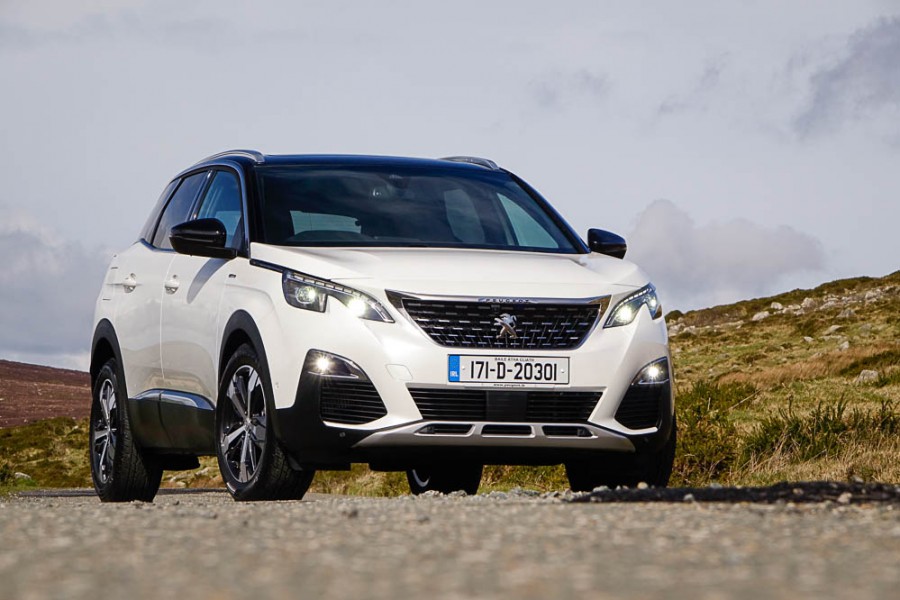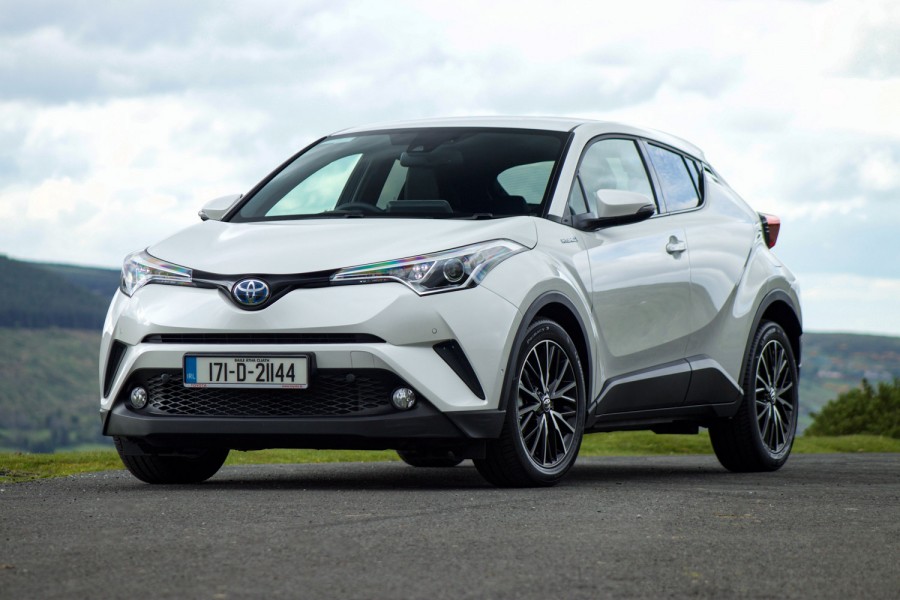Sitting between the CX-3 and CX-5 in the Mazda line-up, the new CX-30 SUV takes on the Nissan Qashqai and Hyundai Tucson with sharp styling, a high-quality cabin and now the addition of the possibly ground-breaking SkyActiv-X petrol engine. We test drive a pre-production version before it goes on sale in 2020.
In the metal
Like Lou Gehrig (ask your grandad) on a hot streak, Mazda's design department is just knocking everything out of the park right now. The current Mazda3 hatchback is - without question - the best-looking family hatch you can buy today. Ditto for the Mazda6 and the CX-5 in their respective categories, and I think the new CX-30 handily takes the looker award in the family crossover segment. Certainly, it's far more interesting to look at than a Hyundai Tucson or a Nissan Qashqai, and if Toyota's C-HR is equally as eye-catching, then it's also rather less elegant.
Mazda's designers have done this by essentially taking the 3 and making it taller. It's not a complete copy-and-paste (the way the light falls on the side panels is different, and the rear pillar isn't as dramatic as that of the Mazda3), but the main points are the same - simple, elegant lines, a big bold grille, narrow lights, and chuck as much Soul Red Crystal paint at it as you can manage. Nice.
It's even better inside, though. Again, Mazda has taken what it's done with the 3 and ported it over to the CX-30 and the results are hugely impressive. The main dashboard is handsome and beautifully assembled - we genuinely are talking Lexus-busting levels of quality here - and it's very comfortable too. The main dials, arguably, look a little too plain, but the new shallow infotainment screen is excellent, and a huge step up on the older systems still used by the 6 and CX-5. Better yet, it's not a touchscreen, and uses a BMW-style rotary controller, which is far more intuitive to operate when you're on the move.
Space is OK - rear legroom is a little tight if the driver is on the tall side, but there's more light coming into the rear compartment than there is in the rather dark confines of the Mazda3, so the kids will be happier in this than in the hatch. The 430-litre boot is probably more adequate than good.
It's safe, though. Aside from the expected radar cruise control and blind-spot monitoring options, there's also an infra-red camera in the dash that tracks your eyes, and sounds a warning if you're dozing or distracted.
All clever stuff, but the real cleverness is in the engine. Mazda continues to eschew the downsized, turbocharging trend and instead equips the CX-30 with a choice of two 2.0-litre, naturally aspirated petrol engines (plus a 1.8 turbodiesel). The SkyActiv-X engine tested here is the range topping option and, at 180hp, the most powerful. It's also, potentially, revolutionary. It uses spark-compression ignition, which, without breaking out the PowerPoint diagrams, basically uses the best of both petrol and diesel ignition systems to try and make a petrol engine that's more powerful, but also more economical. It sounds simple but has proven a tough nut to crack for the car industry. Has Mazda done it?
Driving it
OK, so you'll probably hazard a guess from the star rating that the answer is; no - Mazda hasn't done it. But that's not the whole story. The rating in this case is reflective of the fact that we haven't had as much time with the SkyActiv-X engine as we'd have liked (and, on top of that, the test cars were late pre-production models, so not quite the 100 per cent finished item). The middling rating is more reflective of the fact that we're just not sure about this engine yet. It's impressive, in many ways, and certainly has potential, but we need to spend more time with it at home, on familiar roads, before we can pass a final, definitive, verdict.
What can we tell, you then? Well, having just hopped out of a long drive in a basic 122hp SkyActiv-G petrol CX-30, the SkyActiv-X makes two immediate impressions. One, it's a little noisier (it makes a gruffer sound at low speeds, although at a cruise the two engines sound equally refined), and two, you can really feel the extra torque.
The extra torque amounts to 224Nm, just 11Nm more than the 122hp 'normal' petrol engine, so it sounds laughable that you'd feel it on the road. But you do - the X engine's torque curve is different to that of the standard motor's, so it comes in lower and hangs around longer. You can definitely feel a bit more eagerness when rolling onto the throttle in the middle gears, although if you're used to most rivals' turbo engines, you're likely to find both of the CX-30's engines languid in the extreme. Both have a mild-hybrid system, which saves fuel and adds a little more torque when you need it, but you'd be hard pressed to notice when it's happening.
As for economy, the SkyActiv-X engine again shows potential, but again we're a little short of sheer hours behind the wheel to give a full rating on it. Here's how the maths played out - our long drive in the 122hp-engined CX-30 yielded average fuel consumption of 6.2 litres per 100km, or 45mpg. A much shorter, but broadly comparable, drive in the SkyActiv-X car yielded 6.0 litres per 100km, or 47mpg. Hardly a massive difference, then. Still, the SkyActiv-X engine is much more powerful, so maybe more power with fractionally better economy counts for something?
What certainly counts is the way the CX-30 drives. As with the styling department, Mazda's chassis people are right on song at the moment, and the CX-30 is just peachy to drive. There's not much actual road feel through the steering, but it's nicely weighted and accurate, and the chassis (aided by Mazda's subtle G-Vectoring Control system, which twiddles with the engine's output to better balance the car in corners) is seriously poised and precise. The ride quality is well-judged too - firm, but never jarring. Once we get the chance to start racking up serious mileage on a SkyActiv-X engine, the CX-30's chassis and steering are going to make sure that doing so is no chore.
What you get for your money
Irish prices aren't out yet, but the SkyActiv-X will doubtless carry a significant premium over both the 122hp petrol option and the new 1.8 diesel. Will it be worth it? That is much harder to say, and that's a decision made harder still by the fact that the 122hp engine is so smooth, so quiet, has very good economy and is hardly that much slower to drive in real terms. The SkyActiv-X is going to have to work hard to convince us of its appeal once we get one at home.
Summary
Mazda is a company known for being bloody-minded when it comes to its engines. It has turned its back on turbos when all else around are embracing them, and kept rotary engines going longer than anyone else. Will SkyActiv-X be Mazda's crowing engineering glory, or a dud dead end? We just don't know yet, but there's huge potential in it, as is apparent even from a brief test drive. As for the rest of the CX-30, it's as handsome, as well made and as generally excellent as we've come to expect of Mazda.










































